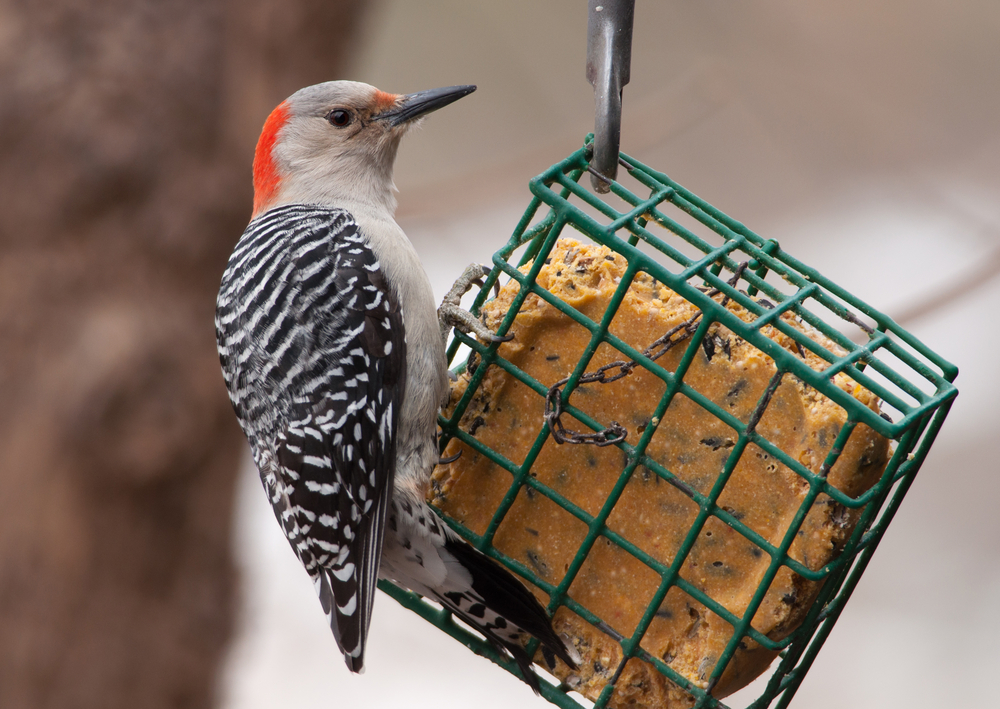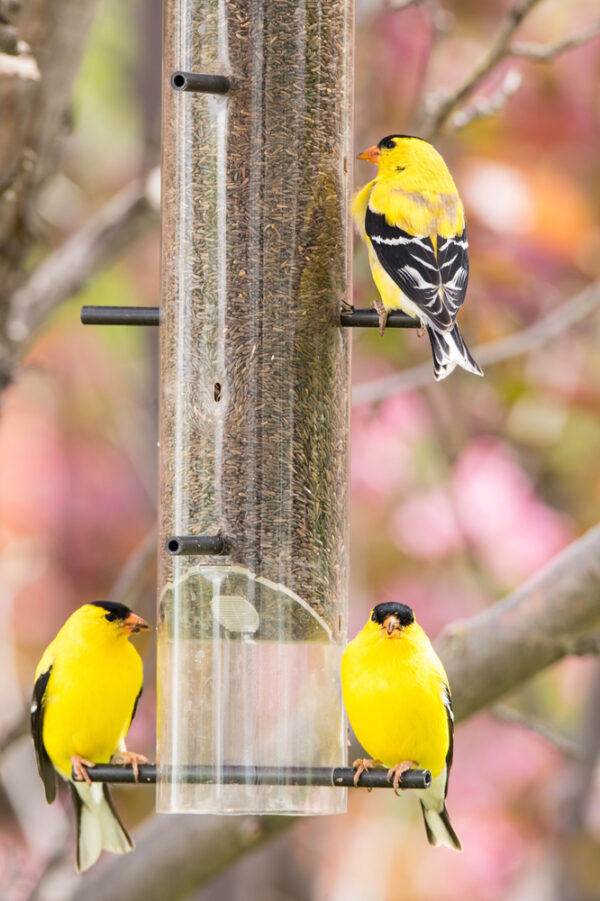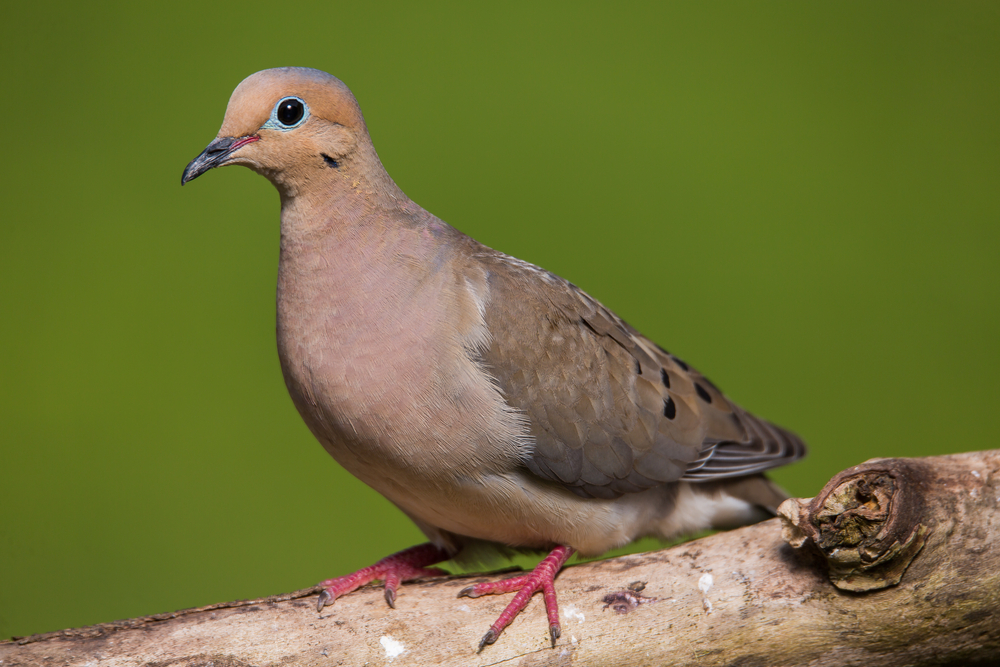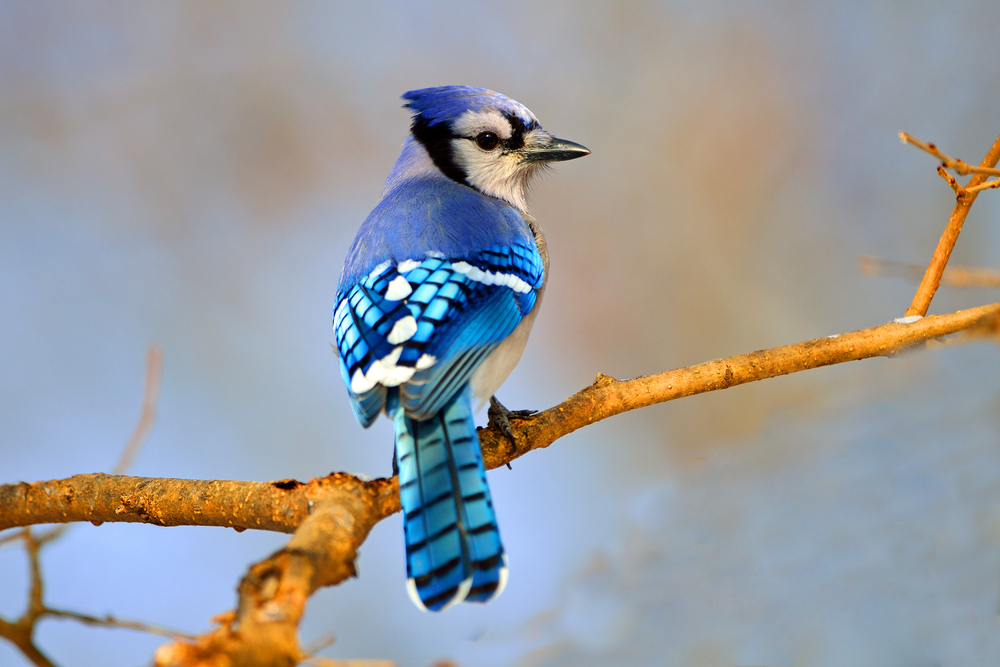As you find yourselves staying home this spring, you may have come to notice the various birds that occupy your neighborhood. The different sounds they make, their colorful feathers, and their various behaviors throughout the day can be quite entertaining, joyful, and educational.
Backyard birding is a wonderful pastime to embark on at any time, but especially during this unique time in our lives. The best way to get started is to begin feeding the birds in your backyard. Here are some simple tips and tidbits to set up a bird buffet.
The Feeder
First, you can simply buy some birdseed and sprinkle it on the ground. It won’t be long before birds find it and spread the word. Within about a week it will become part of the neighborhood birds’ selection of feeding stations. The “feeder” can simply be the ground. This will attract a large number of common birds, such as sparrows, mourning doves, pigeons, grackles, red-winged blackbirds, and many more.
If your neighborhood has a lot of outdoor cats, however, this isn’t the best option. Luckily there are all kinds of feeders on the market that can help protect your backyard birds from predators while they dine.
Bird feeders come in all shapes and sizes for all different types of seed and birds. Birds can be a little picky about feeders and the seed they contain. Consider starting with a large-diameter tube feeder, around six to eight inches. Since they hold a lot of seed, it takes a good while for birds to eat the seed supply, so you won’t be constantly refilling. They are durable and attract a large number of species.
To enhance your offerings, try adding suet feeders to your yard. Most suet feeders are wire cages that hold rectangular suet cakes perfectly. Birds love them! There are also suet log-style feeders, which are usually blocks of wood with cylindrical-shaped holes that fit cylindrical suet cakes. These are less common but woodpeckers enjoy them. Also, be on the lookout for suet feeders with “tail props.” This is simply a vertical surface that protrudes from the feeder bottom. Woodpeckers will brace their tails on this surface just like they would if they were feeding on a tree trunk, making them more likely to be frequented.

Platform feeders are also a good choice. They’re just an open-topped box. Since their simple design is prone to collecting rainwater, consider one with drainage holes and made from recycled plastics. You can also make one yourself out of wood, just be sure to make it strong and durable with a good finish so it doesn’t rot prematurely.
Platform feeders can hold just about any kind of bird food. While seed is most common, oranges, grapes, blueberries, and other food scraps are all fair game for a platform feeder. Trying a wide variety of different foods on your platform feeder will help attract a wide variety of bird species. We’ve enjoyed watching Baltimore orioles feed on oranges on our platform feeders, for instance.
There are a variety of ways to mount a platform feeder. They can be hung from a branch, mounted on a tall pole, or just on short legs, close to the ground.
Hopper feeders are another good option. They typically consist of two large seed troughs on each side supplied by a large seed tank in the center. Hopper feeders are typically large and made of metal, and often pole-mounted. They’re good for many of the bigger birds that have trouble fitting on tube feeders, like grackles, blue jays, crows, and pigeons.
Nyjer feeders are for a special type of birdseed called thistle or nyjer, which finches love. If you believe you have finches in your area, consider purchasing one of these. Finches are playful birds at the feeders and are fun to watch! Nyjer feeders can look like narrow-diameter tubes or even just long, white socks.

Mounting your feeders is usually quite easy. If you have trees on your property, then just simply hang your feeder from a tree. Your local outdoor supply store likely sells plenty of hangers made specifically for this purpose. Be sure to place it in an area you can see from inside your home for maximum enjoyment.
If you don’t have many trees, consider mounting your feeders on a pole. Bird feeder poles are sold that have fork-like protrusions on the bottom. Just stick this pole in the ground and step on the fork to secure it.
For a more robust pole feeder consider mounting your feeder on a 4×4 wooden post. To do so, dig a hole about two to three feet deep, put some gravel in the bottom, compact the gravel, set your post in, make sure it is plumb, and backfill the hole. Make sure the backfill is compacted as much as possible. To mount your feeder to the pole, simply screw L-brackets to the sides of the 4×4, and screw the feeder to the L-brackets.
There are also feeder hangers that screw onto fences. Simply screw the hanger onto the fence post and hang your feeder from it.
Squirrels
As anyone who’s ever fed birds knows, when you attract birds, you inevitably attract squirrels. Many backyard bird watchers use a variety of methods to deter squirrels from eating the seed they purchased for the birds. Indeed, a seemingly endless array of products exists claiming to be squirrel-proof or the more nebulous “squirrel-resistant.”
I too used to try to deter the squirrels but found it wasn’t actually possible to stop them. At best, I got a few days of squirrel-free feeding while watching the squirrel’s acrobatics as they desperately tried and eventually succeeded in reaching the seed. So now I have just resigned myself to feeding both the squirrels and the birds, and recommend you do the same. One benefit of this approach is my local birds have learned to observe and follow the squirrels to new feeders. So the more squirrel action you have, the more bird action you may have as well.
The Seed
Now that you’ve got your feeder, what should you put in it? I recommend Black Oil Sunflower seed to begin with. It’s not overly expensive, and it attracts many bird species.
When you want to branch out, there are a lot of types of birdseed. Millet is a small, white, spherical seed. Doves and sparrows love it, especially if it’s on the ground.
Suet, as previously mentioned, goes in feeders designed just for it. Suet is a must-have. Many kinds of birds that don’t like seed (for example, woodpeckers) enjoy suet, so this will greatly diversify your feeding station and keep things interesting.
Steer clear of milo! Milo basically looks like brown millet. It is some of the most inexpensive seed you can get, which is why it’s used as a filler in many supermarket birdseed blends. Most birds don’t like it and won’t eat it. An exception is if you live out West and have quail. Quail love milo, making them the only backyard bird to have such taste.
Safflower seed is popular because most squirrels don’t like it. I say “most” because some squirrels really like it! If you want fewer squirrels, get safflower, but this has its consequences: fewer birds like it as well.
The Birds
Now that you have your feeder filled, you will start to attract birds. Here are a few descriptions of what common species of birds look like to get you started. If you really get into birding, buy a field guide! Look for ones by David Allen Sibley or Richard Crossley. I’ve found they are best for identifying birds as they come to your feeders.

American Robin
American robins are some common neighborhood birds in North America. They have a bright orange chest and belly, and a slate-gray back. Females have the same shade of slate-gray on their head as they do on their back, while males have a much darker head. Some, but not all, robins also have some white in their throat.
Robins hunt for worms in a very distinctive way that is easily recognizable; they run three or four steps, then they stop and cock their head, looking or listening for worms in the ground. These birds are about 10 inches long. You won’t see them at a feeder, but they’ll be on your lawn, looking for earthworms to eat.

Mourning Dove
Mourning doves behave like tiny chickens! These are beige birds that love to eat on the ground. Millet is one of their favorite types of seed. Their tail is quite long and ends in a point, although they spread their tails often when landing. They do not run and stop like robins do, but walk slowly and steadily, bobbing their head to the rhythm of their steps. They are slightly larger and more plump than a robin.

European Starling
European starlings are some of the shiniest birds out there. At a distance, they look black, but when upon a closer look, you can see lots of purple, shiny blue, green, and white speckles. They have slightly downward curved bills, which are black in winter and yellow in spring, summer, and early fall. The same goes for their plumage, which is covered with white spots (hence the name, starling) in the winter, but not in the spring, summer, and early fall. These are rather aggressive birds that take their place pretty high in the bird feeder pecking order.

Song Sparrow
This is one of the smaller birds out there. At only around 5-6 inches long, they prefer the ground to feeders. They are brown and white striped all over their body, with a mostly brown back with highly varying hues. On the face, they have large stripes on the bottom of the cheeks that look like beards. The area around the eyes is mostly white, while the top of the head is brown.

Blue Jay
Blue jays are one of the largest birds on this list. Their backs and most of their head and crest (the pointy party-hat looking thing on the top of their heads) are varying shades of blue with some white mixed in, while their bellies and chests are white to gray. They also have a prominent black “necklace” on their necks to the back of their heads.
They seem to be the police force of birds, and their piercing “jay, jay jay” calls are often the air raid system when a marauding hawk or crow comes in to wreak havoc. They’ll even chase the intruder around and dive-bomb it, often bluffing but sometimes actually pecking it.
The Fun
Birding is great fun that you can enjoy for a lifetime. Share the joys of attracting and observing the birds in your yard with your family. Hone your ability to identify birds by their physical characteristics, sounds, and behavior. Snap some pictures, sketch a bird or two, and start a list of those you’ve seen. As time goes on, you’ll find yourself identifying and noticing birds of all kinds wherever you go. It’s simply amazing how many birds there are and they are a joy to behold.
Aidan Danza is a 13-year-old bird enthusiast. He has been fascinated with birds his entire life and enjoys feeding the ones that visit his yard all year long. He also writes a weekly nature column for The Epoch Times For Kids Only feature.
